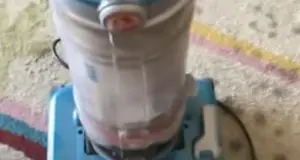How Does a Vacuum Flask Work?
Several people own or are familiar with the vacuum flask. If you are one of them, then at one point or the other, you must have asked the question, how does a vacuum flask work. It’s only natural to ask this question out of curiosity because the truth is that it is challenging to keep things hot or cold without a heater or a freezer. So, when you see a vacuum flask do these things without needing a heat source or freezing source, it’s natural to wonder. In this article, we aim to demystify the working principle of a vacuum flask. Before we get there, let’s get started by understanding what a vacuum flask is.
What is a Vacuum Flask?
A vacuum flask is an insulating storage vessel that can increase the time its content remains hot or cold. The typical design of a vacuum flask used to extend the temperature of its content includes two flasks placed within the other and joined at a neck. The gap between the two flasks is partially evacuated with air; this creates a near-vacuum environment which significantly reduces heat transfer. A silvery lining covers the interior of a typical vacuum flask which also helps reduce heat transfer.
Metal, plastic, or borosilicate glass are common materials used in making vacuum flasks, and their opening is made with polyethylene plastic or cork. Note, while a vacuum flask is such a great device, there is a risk of implosion hazard, and glass vessels under vacuum may shatter unexpectedly. Chipping, scratching and cracking of the flask indicate dangerous failure, especially when the vessel temperature changes rapidly.
Who Invented the Vacuum Flask?
Sir James Dewar, in 1892 invented the vacuum flask. The Scottish scientist designed and invented the vacuum flask due to his research in the field of cryogenics while trying to determine the specific heat of palladium. As such, the vacuum flask is sometimes called the Dewar flask in his honor. In his research, he made a brass chamber which he enclosed in another chamber to keep the palladium at the desired temperature.
Next, he evacuated the air between the two chambers, which created a partial vacuum, keeping the content’s temperature stable. In summary, it was the need for this insulated container that led James Dewar To create the vacuum flask, which later became an effective tool for chemical experiments and a common household item. Now, aluminum and glass are new materials used in making vacuum flasks.
How is Heat Transferred?
Understanding heat transfer will help you understand how a vacuum flask works and how fantastic it is. First, you ought to understand that heat is a kind of transferable form of energy. Conduction, convection, and radiation are the common ways to transfer heat.
● Conduction
Conduction transfers energy from one molecule to another by direct contact; when there is direct contact between a hot body and a cold body, the heat energy transfers through conduction from the hot body to the cold body. In a vacuum flask, there is little to no heat lost by conduction because the spacer suspends the content, thus making it possible to evacuate the air between the two flasks creating a vacuum. The spacer reduces the conduction area between the content and the outer body, thus reducing heat loss.
● Convection
Conduction is the transfer of heat energy by a fluid such as water or air; when you place a hot fluid content in a container, heat from the content transfers to the environment. Current is the movement on a mass of heated water or air. To reduce heat loss by convection flask in a vacuum, the added top cork on the flask prevents air from leaving or entering the flask.
● Radiation
Radiation is the transfer of heat by electromagnetic waves. Now, while conduction and convection heat transfer requires a material medium to transfer heat from hotter to a colder region, radiation doesn’t. In the vacuum flask, the silver lining of the inner flask comes in handy to reduce heat loss by radiation.
How does a Vacuum Flask Work?
When you think about a vacuum flask, what should come to mind is a super-insulated jug that can extend the temperature of its content. Most models of vacuum flasks feature an outer metal or plastic case and an inner chamber separated by vacuum and a spacer. To further prevent heat loss, manufacturers line the two layers of glass with a reflective metal layer. In the case of an unbreakable vacuum, averts the issue of the glass shattering. For unbreakable flasks, they use two layers of stainless steel to create the vacuum and reflecting layers between them.
These few features in a vacuum flask prevent virtually all heat transfer by convection, conduction, and radiation. The vacuum flask can prevent heat transfer by conduction because of the spacer, which creates a vacuum, convection because of the tight stopper cork, and radiation because of the silver lining in the flask. The vacuum flask also works excellently well for cold drinks. If a flask can prevent heat from escaping, it can also prevent heat from penetrating from the outside. The vacuum stops heat from entering the flask by conduction, the sealed stopper prevents heat from getting in by convection, while the silver lining prevents heat from entering by radiation.
Bottom line:
In conclusion, a vacuum flask is a handy item in the lab as well as in homes. So, not that you understand how a vacuum flask works; what’s next is to get one if you don’t already have one. With the info in this article, you should know what features you ought to look out for when buying a vacuum flask. If you still have any questions about how a vacuum flask works, feel free to leave a comment in the comment section below.





